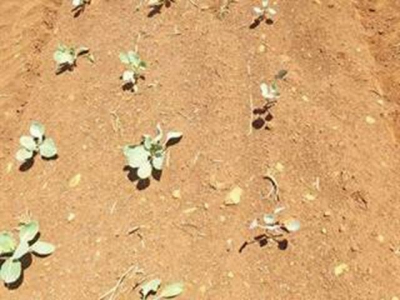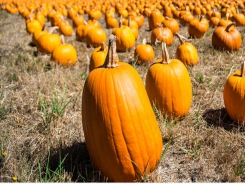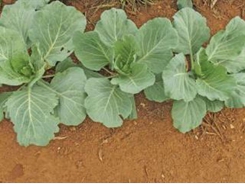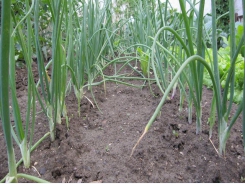Making a point

Recently, I wrote about the necessity of ensuring vegetable transplants have enough nitrogen in the plug or in the plant to stimulate root growth and ensure an early start as well as uniform growth.
The row on the right did not receive nitrogen at planting. Photo: Bill Kerr
Most farmers associate phosphorus with root growth, but this element will not leach. If there was sufficient for the seedling to grow properly at planting, it’ll still be there. With nitrogen, on the other hand, it’s a case of ‘here today and gone tomorrow’. And without nitrogen, no part of the plant can grow.
After discussing this in the column, I came across a perfect example to illustrate the point. A farmer who uses nitrogen in a watering can to irrigate the pulled seedlings in their boxes in the land, was planting a land of cabbages many kilometres from the farm shed.
Not growing
He ran out of nitrogen just as he reached the last box, and did as I, or any other farmer, would have done. He planted this one without treatment rather than going all the way to the shed for a handful of nitrogen. About 10 days later, a colleague noticed a section of row was a lighter colour and not growing. Asked why this should be, the farmer told him about the situation. I was also duly informed and took a photo. At the time of the first photo, the land had just received an application of LAN, which was about to be irrigated in. Two weeks later, when LAN was next applied, I visited the site again.
The row which had been ‘missed’ at planting still had much shorter plants. The second dose of LAN restored their colour, but their size remained the same. A visit a further two weeks later showed the plants were still smaller than those treated at planting, and it was obvious they would never catch up or reach their full potential. There are still too many vegetable farmers who don’t realise how important nitrogen is and how important the timing is for every crop grown. Too many also don’t realise how brief its presence can be due to leaching from rain or irrigation.
Worth it
LAN is expensive and many hesitate to apply enough for this reason. But when we consider the cost of land preparation, seedlings, planting, herbicides, chemicals for insect control, irrigation and so on, the extra few bags of LAN will be negligible as a percentage of total cost. And yet many farmers lose up to 1 000 bags or more per hectare. It’s a worthwhile exercise to calculate how many bags of cabbages you have to sell in order to pay for one bag of LAN. You’ll soon determine that trying to save money on nitrogen is false economy.
It’s also said there’s no benefit in applying nitrogen beyond 28 days on cabbages. This is the result of a badly analysed trial done by a university. One farmer near Bloemfontein, who believed this, asked me to advise him, as he had a huge area under cabbages which were well beyond 28 days old and he wasn’t happy with them. I told him to immediately apply 200kg of LAN/ha. Two weeks later the farm was transformed and he harvested a good yield. Rather apply too much nitrogen if in doubt than get caught short.
Có thể bạn quan tâm
Phần mềm

Phối trộn thức ăn chăn nuôi

Pha dung dịch thủy canh

Định mức cho tôm ăn

Phối trộn phân bón NPK

Xác định tỷ lệ tôm sống

Chuyển đổi đơn vị phân bón

Xác định công suất sục khí

Chuyển đổi đơn vị tôm

Tính diện tích nhà kính

Tính thể tích ao hồ



 Getting rid of paspalum
Getting rid of paspalum  The correct spacing for onions
The correct spacing for onions